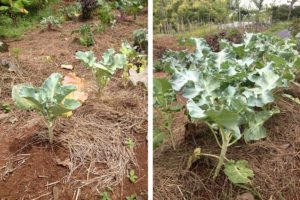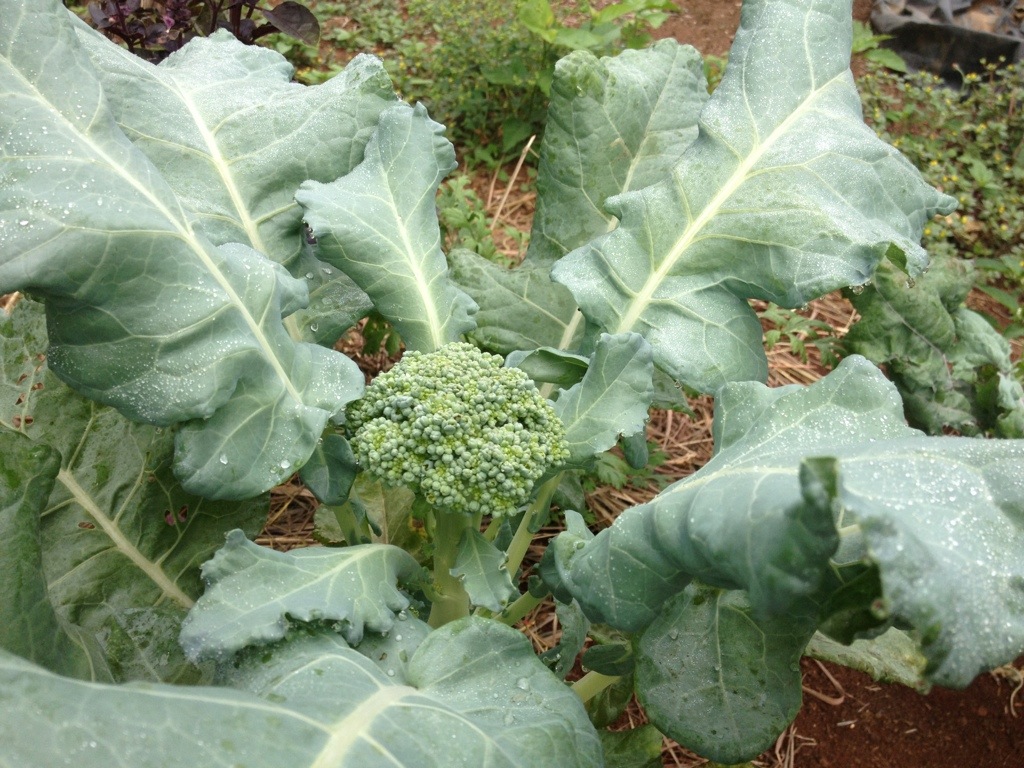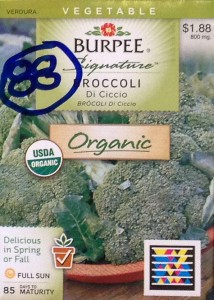Broccoli! We have done the “impossible” once again!
They said it couldn’t be done, but our meter-high broccoli plants are proving them wrong.
We have a couple dozen growing in various spots around the farm, and at this moment, two of them are sprouting broccoli heads, which are expanding daily.
How to Grow Broccoli in the Tropics
We’re located in the Southern Nicoya Peninsula of Costa Rica, which is a tropical zone, although the forest here is slightly drier than a true rainforest climate. Still, it’s very hot and humid most of the time. We’ve got lots of ravenous bugs and critters to deal with, intense sun, rain, and wind.
If you read about broccoli on the internet, you’ll hear that it’s a cold weather plant that doesn’t grow well in the tropics, or if it does grow, it won’t produce the broccoli heads that we want. I like a challenge, so I thought that at the very worst, we’d be able to eat the leaves if we could get it to sprout and grow, since our Kale has grown so well here (much to the surprise of nearly everyone).
Here’s the steps of how we did it so you can repeat it:
Step 1: The Seeds that Worked
We used organic broccoli seeds from Burpee. The type is “Di Ciccio”, an heirloom variety from Italy.
- Burpee Di Ciccio Broccoli – A link to the exact seed we bought
- Di Ciccio Heirloom Brocoli – Here’s a link to another supplier (SustainableSeedco.com)
- 500 seeds of Di Cicco Broccoli for 99 cents! – The Cheapest Option, at Amazon.com
Step 2: Start them indoors
The instructions on Burpee’s website say “Sow indoors six weeks before transplanting outdoors.”
What we did was to put them in our “baby beds” which are long raised beds of our best home-made soil, and we sprout the seeds there. Here, they’re protected from rain by the screen roof, and it’s 80% shade. They grew well under these conditions.
Nutrition: Every week, the young plants were sprayed with a mix of fish emulsion and a potassium nutrient.
Water: Once every day.
Step 3: Transplanted Twice
When they were around 4-6 inches high, we transplanted them to medium-sized bags (6″ wide and 10″ tall) filled with the same soil, to give them more breathing room. We continued to leave them in these bags until they were 12-18″ tall.
 Note: we transplanted some of the seedlings directly outside to our raised, mulched beds in full sun, but they didn’t grow well. See the two photos on the right (click them for a much larger image) show what happened. The two on the left was planted directly into the beds when 4-6″ tall. The photo on the right shows how much better they grew when they were first moved to bags and allowed to grow more. This may be because when the second group was transplanted, a whole bag of our best soil was planted with them, so they had a lot more nutrition to really get going.
Note: we transplanted some of the seedlings directly outside to our raised, mulched beds in full sun, but they didn’t grow well. See the two photos on the right (click them for a much larger image) show what happened. The two on the left was planted directly into the beds when 4-6″ tall. The photo on the right shows how much better they grew when they were first moved to bags and allowed to grow more. This may be because when the second group was transplanted, a whole bag of our best soil was planted with them, so they had a lot more nutrition to really get going.
Step 4: Care During Growth
Soil: These were transplanted into the soil we have onsite, which is a thin layer with lots of red clay. It has good minerals but not a lot of organic matter. We scraped this soil into raised beds, then added “gransa” (rice hulls) and our home-made soil to enrich it. Then we mulch on top of that with dried grass from the farm.
Sun: Full sunlight in April, which is the hottest and driest time of year in this part of Costa Rica.
Water: Twice per day because it’s so hot and dry in April, every day except for Sunday, which was just once per day. We set up a sprinkler to do it so they got lots of water.
Additional Nutrients: Sprayed once per week with the same mix of fish emulsion and potassium.
Step 5: Harvest
Heads: At the time of writing this, we haven’t harvested yet. The heads are around two inches wide. When they are 4-5 inches, we can cut them off, and from what I’ve read on the internet, the plant will continue to live and sprout more small and medium-sized heads off the sides of the main stalk.
Leaves: The broccoli plants are outgrowing our Kale! We can harvest the leaves, which are really just another type of Kale as far as I’m concerned, and use them as we would that plant.
Step 6: Seeding to Complete the Cycle
Update Dec 29, 2014: We hoped at the end of this we’ll be able to get some seeds. These are heirloom varieties, not hybrids or GMO, so we wanted to produce seeds that we can plant for next time. However, after two years of work on this, so far we have never been able to get broccoli, kale, collards, cabbage (cruciferous vegetables) to produce seeds. We haven’t given up hope, but so far it seems they need colder weather perhaps for this?
















